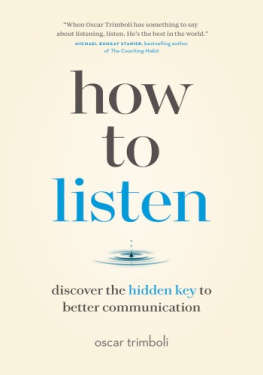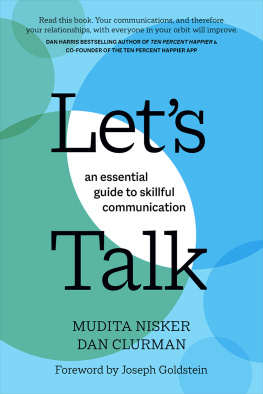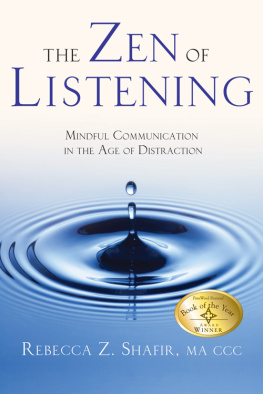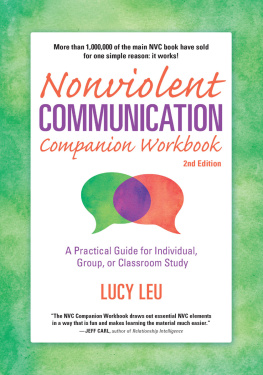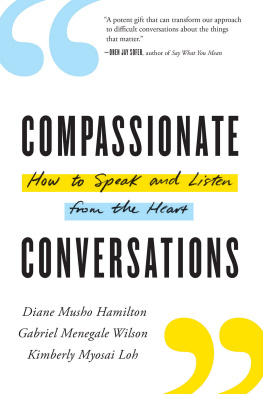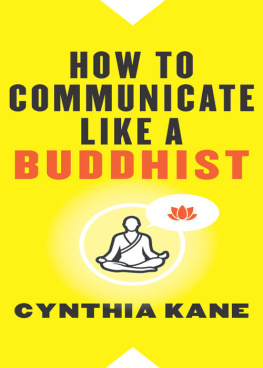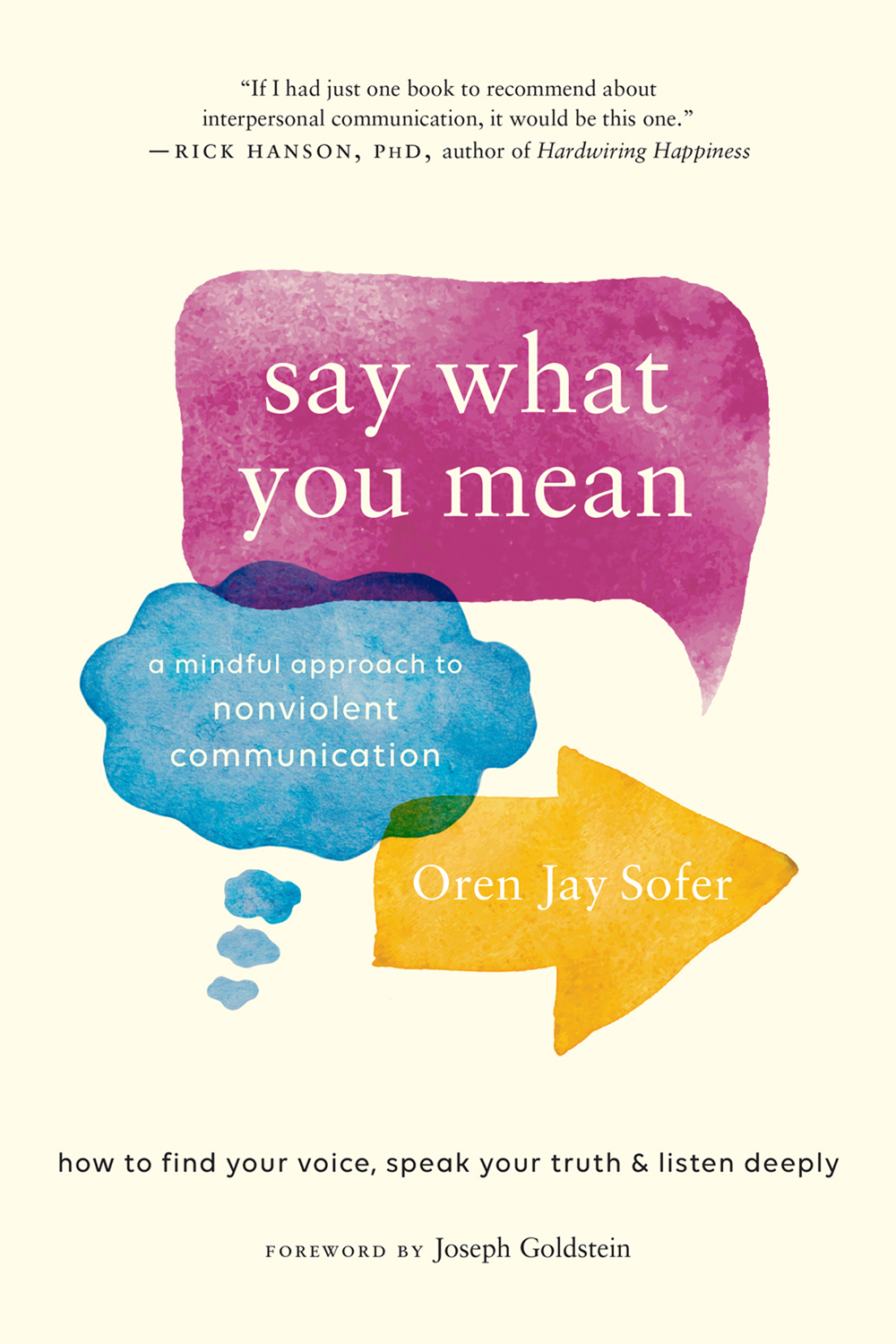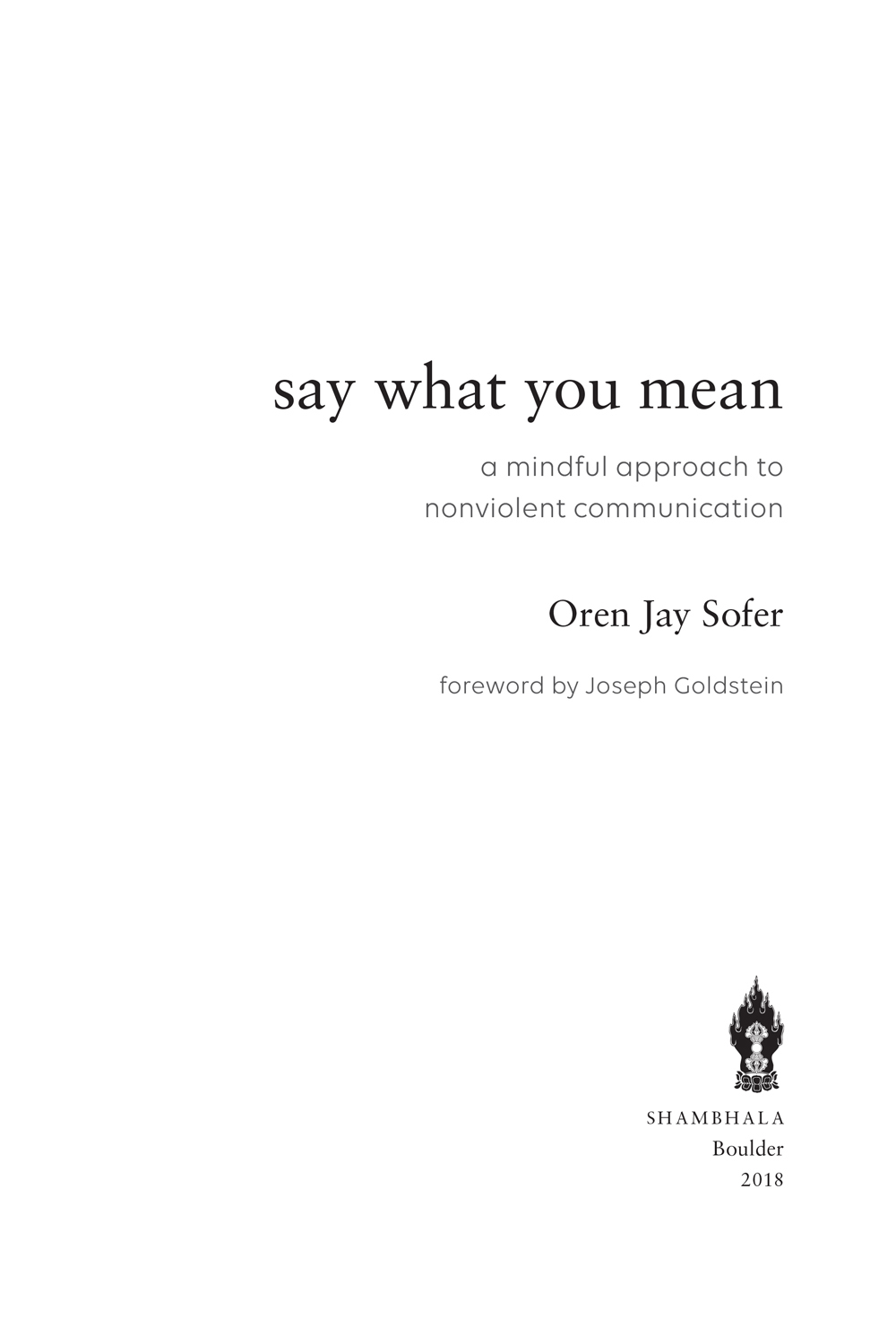PRAISE FOR
say what you mean
By the time we reach adulthood, most of us have learned to operate through such deeply engrained patterns of language and behavior that virtually all of our communication involves projection, assumption, and bias. No wonder we often feel so cut off and all alone! Mr. Sofer deftly weaves together his mindfulness practice and principles of Nonviolent Communication to help us learn how to find one another again. This is a powerful guidebook to thinking, speaking, and listening with authenticity and care. Bravo!
Sharon Salzberg, author of Real Happiness and Real Love
This tremendous book addresses one of the biggest challenges in any relationship: how to combine heart with strength, compassion with assertiveness. Written with great warmth and clarity, it brings together well-researched principles, effective tools and suggestions, powerful experiential practices, and many examples. It is down-to-earth and completely accessible while also being so deep, even profound. If I had just one book to recommend about interpersonal communication, it would be this one.
Rick Hanson, PhD, author of Resilient: How to Grow an Unshakable Core of Calm, Strength, and Happiness
Oren Jay Sofers eloquent book Say What You Mean could just as well be titled Living What You Mean. Going beyond the surface level of communication, he describes our relational journey together in its inherent connections with how we behave, how we express, perceive, and meet the needs of ourselves and others, how we engage with difference and even conflict, how we negotiate love and angerin sum, how to fully live this complex life. Sofer gives essential frameworks, perspectives, and skills for our shared humanity.
Larry Yang, Buddhist teacher and author of Awakening Together: The Spiritual Practice of Inclusivity and Community
Words have tremendous powerboth to harm, and to heal. In Say What You Mean, Oren shares a three-part process for communicating with mindfulness, clarity, and compassion and creating more connection and understanding in our relationships. In these times of turbulence and conflict, we need this more than ever before.
Chris Kresser, MS, LAc, New York Times best-selling author of The Paleo Cure and Unconventional Medicine
Meeting the enormous challenges of living in these times calls for an integration of inner practices of mindfulness with outer practices of communicating with honesty, vulnerability, strength, care, and empathy. Oren shows us a way to do just that.
Miki Kashtan, Certified Nonviolent Communication Trainer and author of Spinning Threads of Radical Aliveness
Shambhala Publications, Inc.
4720 Walnut Street
Boulder, Colorado 80301
www.shambhala.com
2018 by Oren Jay Sofer
All rights reserved. No part of this book may be reproduced in any form or by any means, electronic or mechanical, including photocopying, recording, or by any information storage and retrieval system, without permission in writing from the publisher.
Ebook design adapted from printed book design by Greta D. Sibley
Cover design by Kathleen Lynch/Black Kat Design
Cover illustrations by Nataleana/Color_Brush/Slavadubrov
Library of Congress Cataloging-in-Publication Data
Names: Sofer, Oren Jay, author.
Title: Say what you mean: a mindful approach to nonviolent communication / Oren Jay Sofer.
Description: First edition. | Boulder, Colorado: Shambhala Publications, Inc., [2018] | Includes bibliographical references and index. Identifiers: LCCN 2018009367 | ISBN 9781611805833 (pbk.: acid-free paper)
eISBN9780834841895
Subjects: LCSH: Interpersonal communication. | Nonviolence.
Classification: LCC HM1166 .S64 2018 | DDC 302.2dc23
LC record available at https://lccn.loc.gov/2018009367
v5.3.2
a
For the teachers and friends who showed me the way.
And for my mother, my first teacher, who gave me a solid foundation and taught me to write.
The fish trap exists because of the fish;
once youve gotten the fish you can forget the trap.
The rabbit snare exists because of the rabbit;
once youve gotten the rabbit, you can forget the snare.
Words exist because of meaning.
Once youve gotten the meaning you can forget the words.
Where can I find a man who has forgotten words,
so I can have a word with him?
CHUANG TZU
Returning hate for hate multiplies hate,
adding deeper darkness to a night already devoid of stars.
Darkness cannot drive out darkness; only light can do that.
Hate cannot drive out hate; only love can do that.
DR. MARTIN LUTHER KING JR.
contents
part one
the first step: lead with presence
part two
the second step: come from curiosity and care
part three
the third step: focus on what matters
part four
bringing it all together
foreword
IN ONE WAY or another, we spend our lives communicating. For most of us, the predominant mode of communication is speech, the words we use and the emotional tone underlying our words. Interaction forms the bedrock of all our relationships, and the patterns through which we engage in conversation determine, to a large extent, the quality of our lives. Whats more, our habits in communication establish a template for our relationship with ourselves, and with our society at large.
In this wonderful book, Oren Jay Sofer explores the many nuances of the way we speak, illuminating the patterns that foster well-being and harmony, and those that simply lead to greater frustration and distress. The perspectives and methods in this book also hold an essential key to the healing and radical transformation that is so desperately needednot only in our lives as individuals but collectively in our communities and on our planet. Drawing from his extensive training in mindfulness practices, somatic healing, and Nonviolent Communication, Oren provides both the insight and the skill necessary for us to transform communication into a vehicle for greater intimacy, honesty, and compassion, and to point our social lives toward greater equity and peace.
Through clear theoretical frameworks and a wealth of stories and examples, Say What You Mean offers an array of useful tools for strengthening awareness of our habitual patterns, as well as many specific suggestions for how to communicate with greater care and effectiveness. Oren discusses the essential role of empathy in listening to others and proposes, in very precise ways, how to cultivate it. As he writes, Communication practice is not about what we say. Its about where were coming from and how we say it.
He also clearly describes practices for recognizing and understanding our thoughts, perceptions, and emotions, and how they influence, often unconsciously, the words we use and the motivations behind them. Without this understanding, we often find ourselves caught in the many tangles of our conditioning, not seeing our way to greater connectedness and inner freedom.
Besides being a detailed and comprehensive roadmap for cultivating wise communication, there are also many little gems in this work that can act as reminders through the day. One of my favorites is the simple understanding that we have more clarity and power when we use fewer words with more sincerity.


